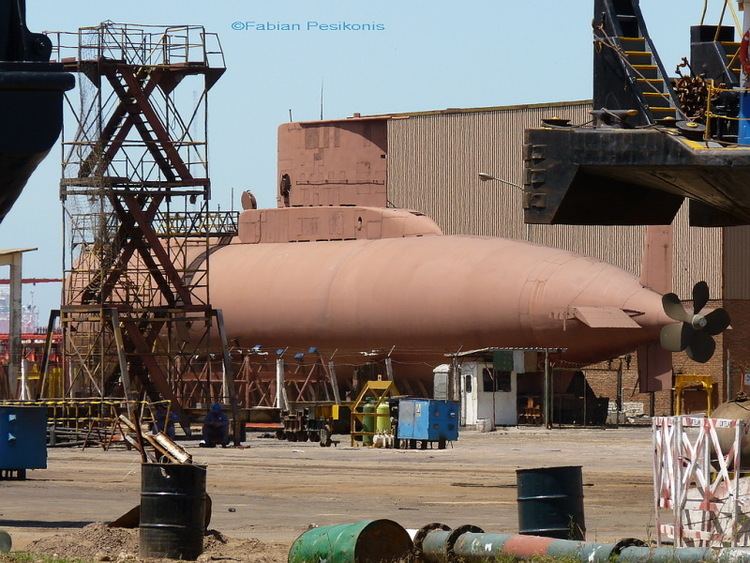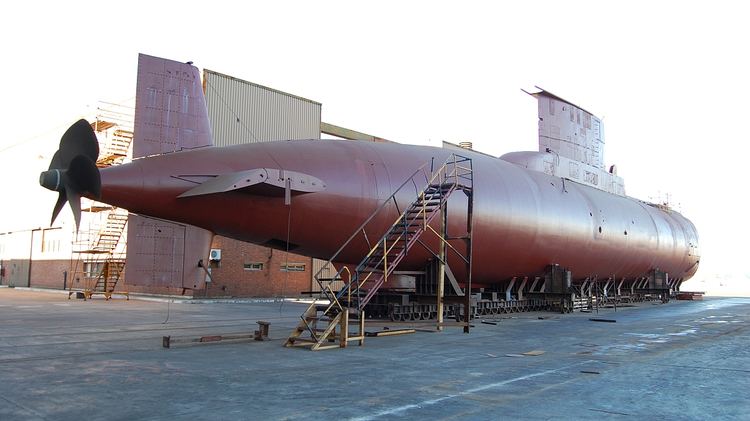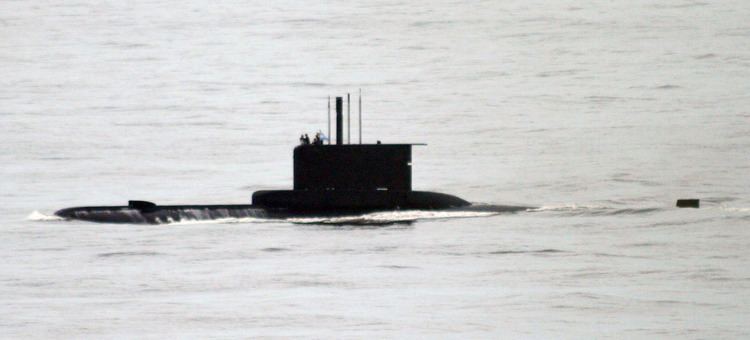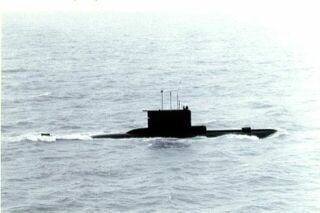Name San Luis Commissioned 24 May 1974 Identification S32 Length 56 m | Completed 3 April 1973 Out of service 23 April 1997 Beam 6.2 m | |
 | ||
Builder Similar ARA Santa Fe (S 21) , USS Perkins (DD 877) , ARA Granville (P 33) | ||
ARA San Luis (S-32) is a Type 209 diesel-powered submarine of the Argentine Navy. Built in Germany, San Luis has a displacement of 1,285 tonnes and was commissioned in 1978. She was struck in 1997 after an incomplete overhaul.

History

San Luis is best known for serving in the Falklands War (Spanish: Guerra de las Malvinas/Guerra del Atlántico Sur) of 1982. Only one other submarine, the Second World War-era ARA Santa Fe, was operational at this time. After Santa Fe was captured and scuttled by the British in South Georgia on 28 April, and the nuclear submarine HMS Conqueror had sunk the cruiser ARA General Belgrano on 2 May, the Argentine fleet retired to port for the duration of the war, with the exception of San Luis, making her the only Argentine naval presence facing the British fleet.

San Luis was a major concern for the British as she presented a serious danger to all British warships in the area. Sea, depth and thermal conditions around the Falklands were favourable to diesel submarines, and difficult for anti-submarine ships. The Royal Navy (RN) aircraft carriers Hermes and Invincible were obviously the priority targets for San Luis for the loss of either would have ended RN capability and elevated the war to another level or led to the entry of the US in one form or other. Sources conflict on whether San Luis was capable of finding and attacking the RN carriers on the basis that the carriers were locked east of the Falklands at points determinable by Sea Harrier endurance, the ability of the Argentines to intercept RN ships satellite communications and the degree of Soviet assistance .

San Luis reported two attacks on Royal Navy ships during the war. On 1 May, the frigates Brilliant and Yarmouth were sent to hunt down San Luis operating north of Stanley. San Luis reported firing a German-made SST-4 torpedo, on purely passive sonar detection of British gas turbine powered warship(s) and Sea King's searching. The torpedo missed its target, presumably due to range, malfunctioning of the computer fire control system, gyro misalignment and the breakage of the wire guidance wire. Nevertheless experts believe that a closer range attack or alternative use of the MK 37 in an anti-ship role might have been successful. Sonar operators aboard Brilliant were certain they heard and confirmed the sound of an SST-4, and Brilliant, Yarmouth and three Sea Kings from Hermes's 826 Squadron launched depth charge, mortar and torpedo attacks for 20 hours until the short sub-Antarctic night on 1 May. Searching for the Type 209 submarine was hindered by the numerous wrecks of whaling boats and whales, indistinguishable from submarines. San Luis however had adopted the tactics of 1944-45 German U-boats and rested on the bottom, shut down and invulnerable to attack, some distance from the area of interest to the British frigates. During the short Falklands war, the United States supplied 200 Mk 46 torpedoes to the Royal Navy which expended 50 Mk 46 torpedoes during the war against sonar detection of the possible sound of the single Type 209 submarine. The Royal Navy never detected or located the submarine, which was in among the fleet, but which weapon system effectiveness had been limited by British Intelligence.

San Luis attacked again on the night of 10 May. The frigate Alacrity had made passage up Falkland Sound, sinking an Argentine merchant navy ship on the way. As Alacrity left the channel before dawn, sister ship Arrow was waiting to accompany her back to the Task Force. San Luis detected the two ships and fired two SST-4 torpedoes, one of which did not leave its tube; the other was apparently defeated by Arrow's anti-torpedo measures. There were several problems with torpedoes and torpedo systems; in particular it appears that the torpedoes were not prepared properly, and did not arm themselves after firing, so would not explode even if they did hit a target. It has been suggested that previous apparent misses could have been due to torpedoes which struck home but did not explode. After the Falklands War ended, German and Dutch engineers were sent to Argentina to discover what went wrong with their torpedoes. The problem was so simple as to be unbelievable: one of the Argentine sailors who was in charge of periodic maintenance of the torpedoes had inadvertently reversed the polarity of power cables between the torpedoes and the submarine. This meant that when the torpedoes' gyros were spun up, they ran "backwards" and thus tumbled on launch, preventing the weapons from taking up their proper heading.

The mere existence and presence of San Luis was a severe nuisance to the task force. The threat posed by San Luis forced the Royal Navy to suspend the rescue efforts of two Sea King helicopters who ditched at sea on 12 May and 18 May 1982 respectively, while conducting anti-submarine operations. Both aircraft were eventually scuttled by naval gunfire.
San Luis returned to Puerto Belgrano on 17 May for repairs to her weapons systems, and was not operational for the rest of the war.
